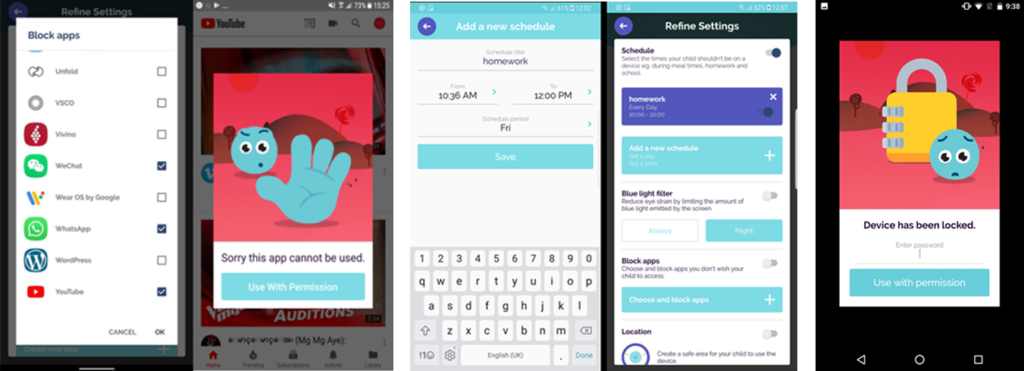Cutting Screen Time From Family Meal Times

We all love a good hearty meal, and even more when we’re eating it with the company that matters most. But it can all take a sour turn when uninvited guests join the table – our phones.
Living on a digital diet

Be it breakfast, lunch or dinner, the phone always somehow makes its way to the dining table. Like a reflex action, the moment our children sit down at the dinner table, they immediately whip out their phones and start uploading their whereabouts on Instagram. Then, the messages come flooding in and they spend majority of the evening glued to the screen. Nowadays, we’re unfazed when we notice children using their phones while eating with their family.
“It’s normal for kids these days,” we say to ourselves. However, it shouldn’t be.
Meal times are usually the only times we have to spend together as a family and screen time shouldn’t get in the way of that. In fact, during a 2018 study, researchers from the University of British Columbia (UBC) have found that using your phone at the dining table can one feel less socially engaged and more distracted [1]. In that same study, it was found that when 300 people were tasked to go for a dinner with their families or friends, they ended up using their phones for an average of 11% of the meal. Imagine spending 11% of your precious family meal time staring at a screen instead of bonding with the people you love.
Stop their hunger for the screens
If your children are constantly staring at the screen during a meal, it’s time you pull the plug on those devices and start setting some ground rules:
1. All devices off the table
According to the above 2018 study from UBC, the researchers found that phone use is infectious. They mentioned that people are more likely to use their phones at the table if they see others doing so too.

Parents, if you’re guilty of using your phones at the dining table, it’s high time you toss those phones away because you might be influencing junior to do the same. Make it a rule in your household to set the phones aside during all meal times to prevent yourself and your children from being tempted to use their phones at the table. That way, you can all enjoy some quality time together over a sumptuous meal without being distracted by every ping and ring.
2. Create conversations that centre around your children
Sometimes, the reason why your children zone out during meal times and end up on social media is because they’re not involved in the conversations over dinner. Go beyond the usual “how was your day?” and “what do you think of the food?” questions. Really use this time to get to know your children and dig a little deeper about them. Depending on your child’s age, the way you speak to them will elicit different responses. Here’s some pointers on how to speak to your kids based on their age:
Preschoolers:
Ask specific questions about their day. For example, you could ask, “What did you like better today at school? Play time or snack time?” or “Did you play with your friends today? What did you guys play?” Such questions help your preschooler focus their attention on one specific subject which will help them zone in on one anecdote to share with you.

Elementary school kids:
As your children begin elementary school, their lives will be mostly centered on their schooling days. Thus, it’s important for you to get to know their curriculum closely, that way you’ll know what your child is talking about when they’re telling you about their day. You could start by asking them how they felt about a particular teacher’s class, or if they have any interest in specific extra curriculars.
Kids at this age will also understand a lot more about your daily routines so feel free to pop in a few of your own anecdotes and share about your day.
Teenagers:
Ah, adolescence, a time when your kids are trying to figure out who they want to be. It’s also a time when your kids tend to be a little more closed-off than when they were smaller. During this period, it’s important to listen more than speak. It’s important to reassure your teen that you’re always there to listen to them and that you’re there supporting them. Over the dining table, you could ask your teen if anything cool or interesting happened that day, or about their dreams for the future. Keep an open mind and try to stay as neutral as possible. That way, your teen won’t feel like he/she is being judged and would feel comfortable sharing their thoughts and feelings with you.
3. Use parental control apps
If your child just can’t seem to go without his/her phone even at the dinner table, consider using parental control apps like plano to help you. You can use the plano app to schedule no-device times. For instance, if your child is not allowed to use his/her phone during dinner time, you can use the plano app to lock his/her device during those hours. That way, your child will be able to focus on family time over a meal instead of the screens.

Making the most of all our time.
There’s never enough time for any of us and that’s why it’s important to seize every opportunity available to spend time with our loved ones. As our children grow older, it’s important we help them balance this time and understand the importance of managing their screen time. Some day, they’ll have families of their own and we’d want them to spend that precious time with their own families as well. And in that time, those devices can wait.
References
[1] Dwyer, R., Kushlev, K., & Dunn, E. (2018). Smartphone use undermines enjoyment of face-to-face social interactions. Journal Of Experimental Social Psychology, 78, 233-239. doi: 10.1016/j.jesp.2017.10.007
Tools Designed for Healthier Eyes
Explore our specifically designed products and services backed by eye health professionals to help keep your children safe online and their eyes healthy.





